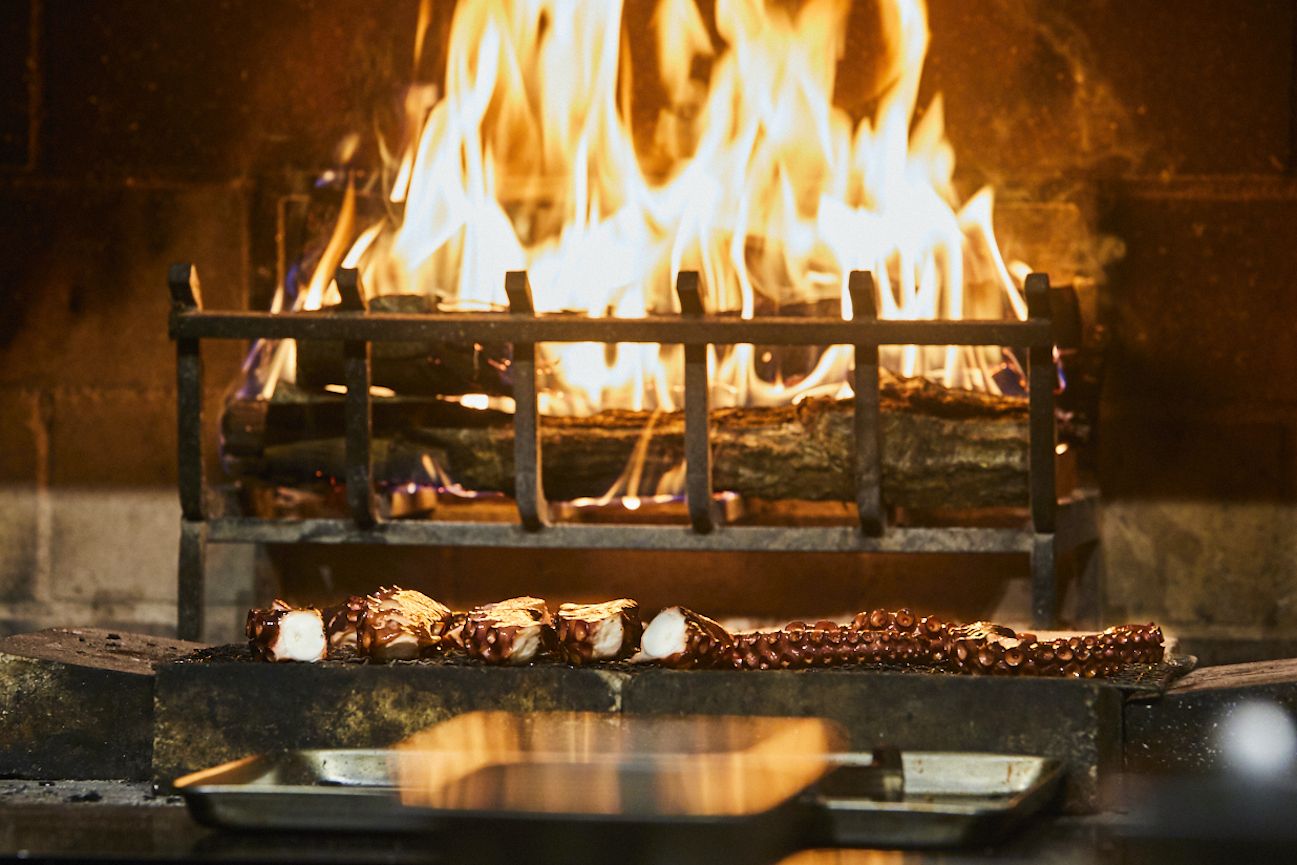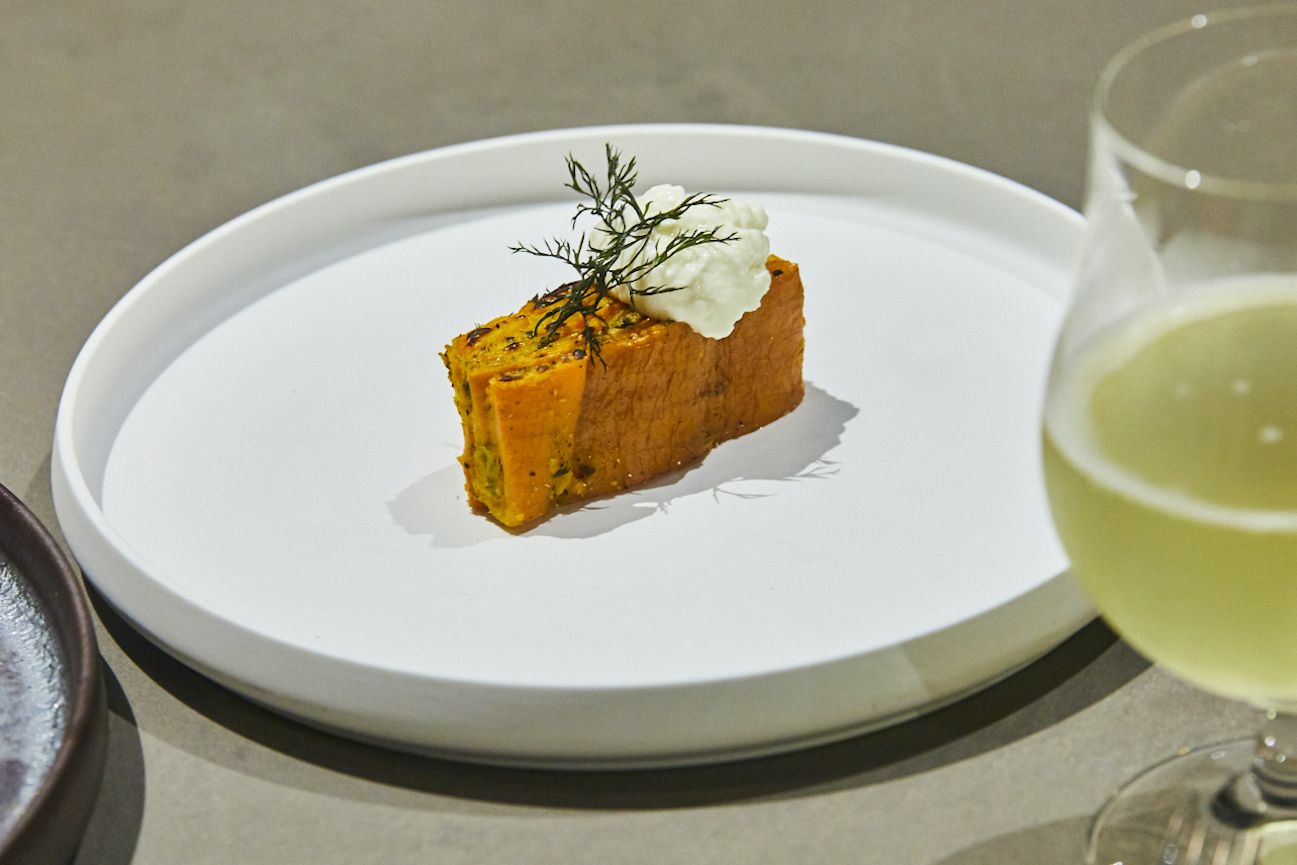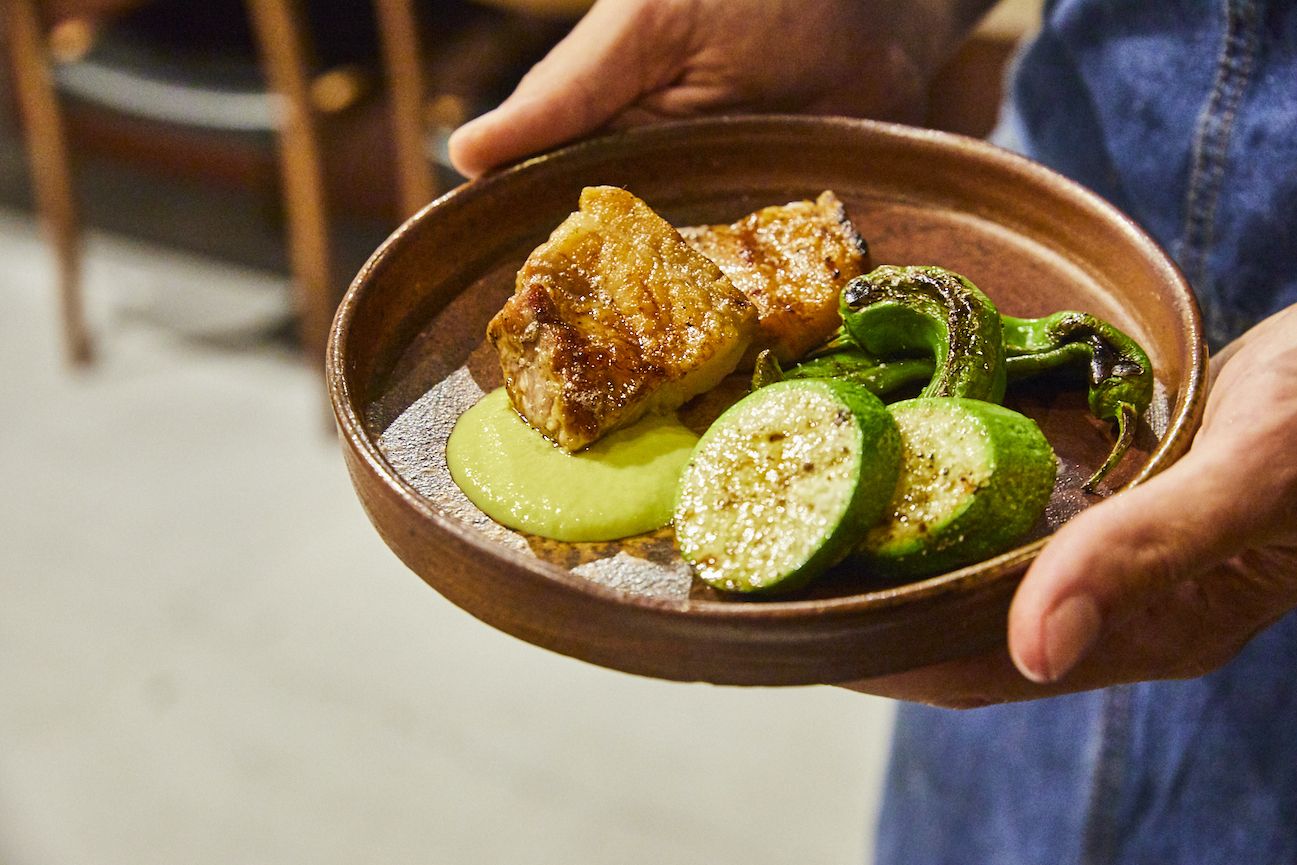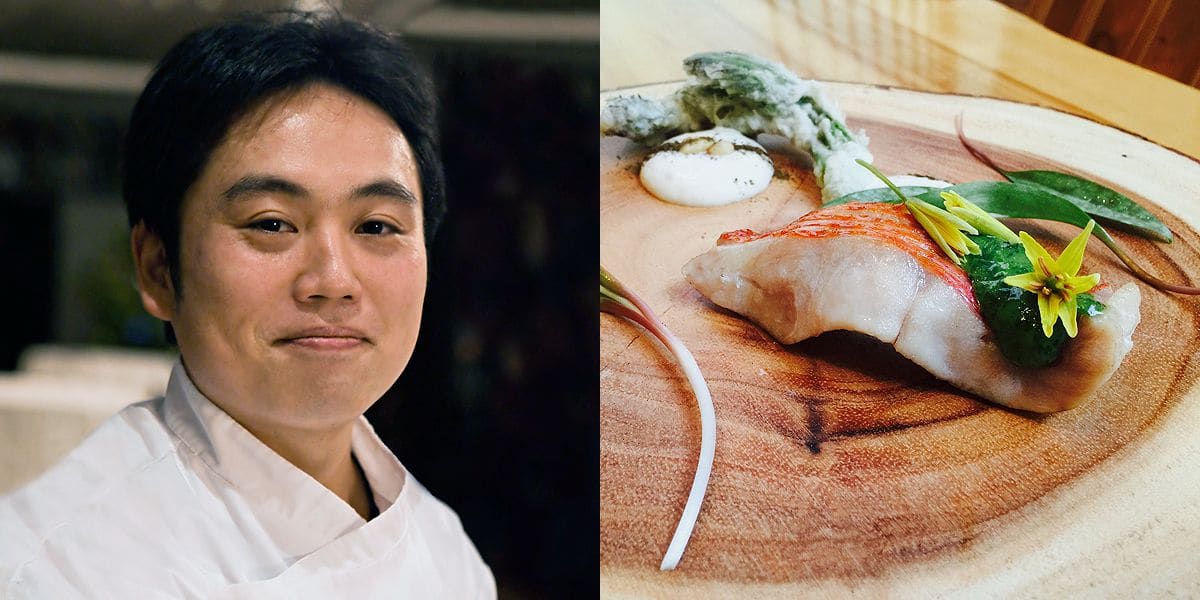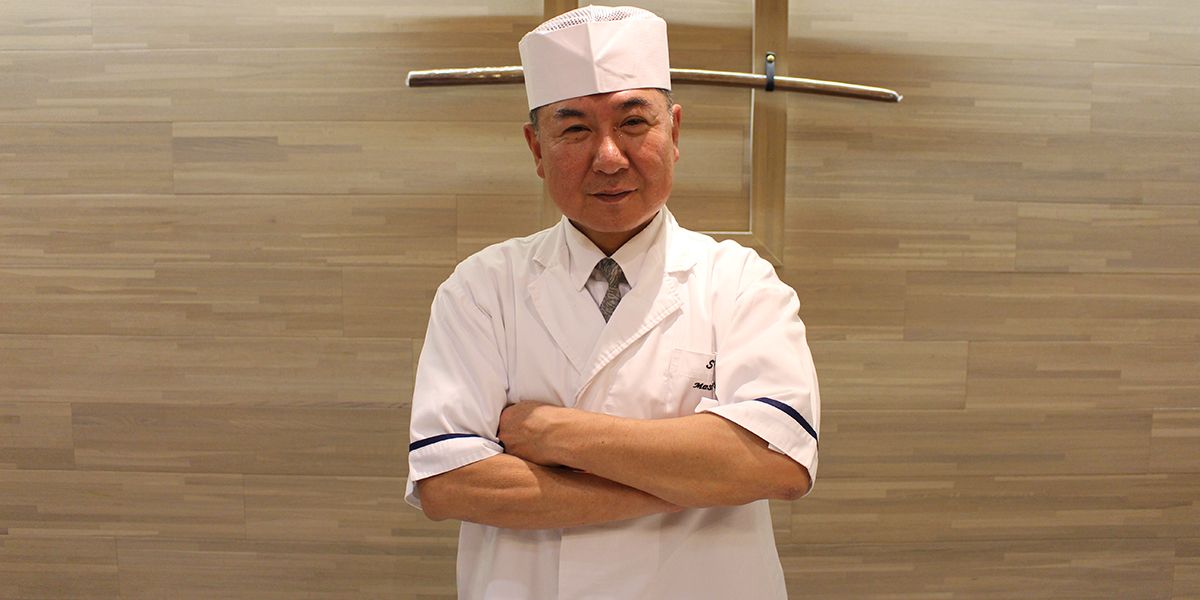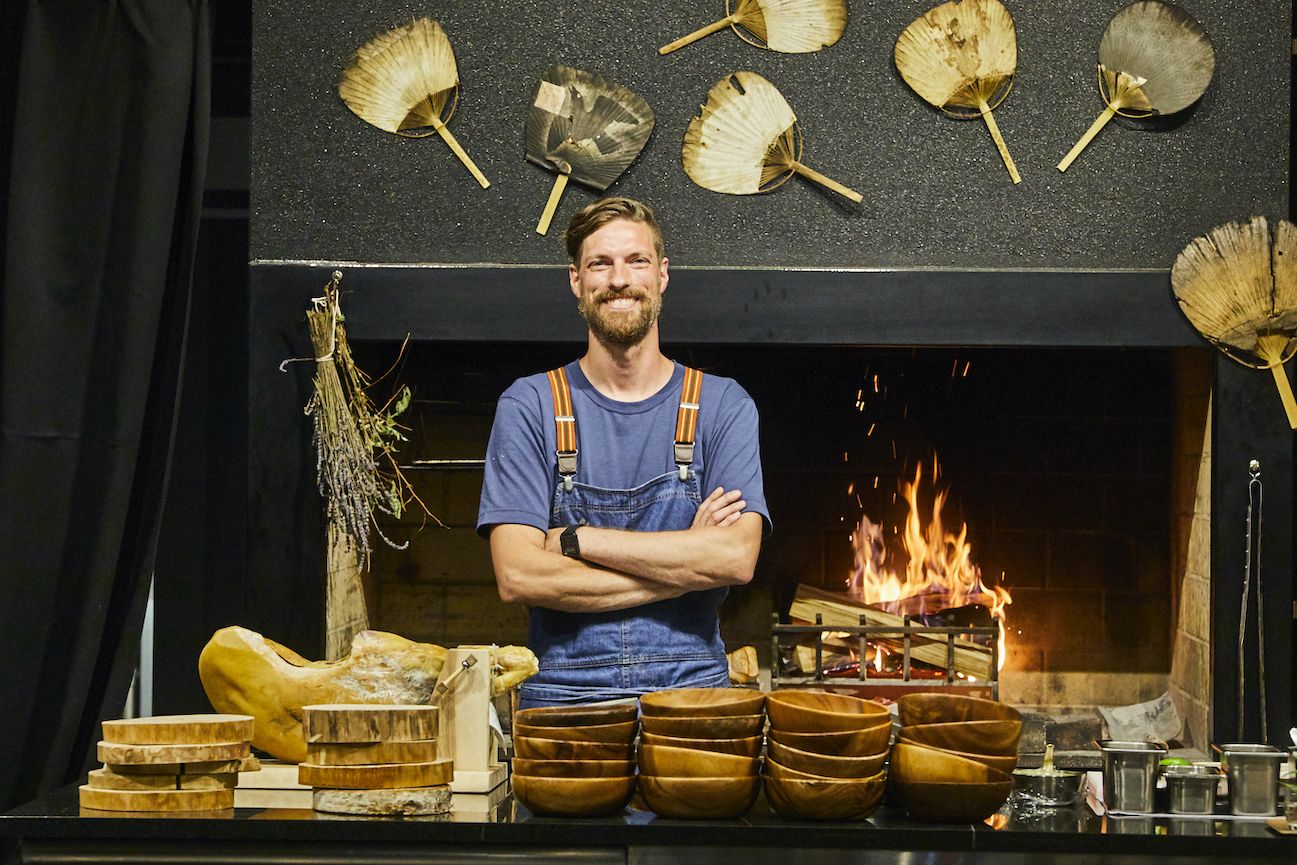
A new future for Japanese ingredients, inspired by primitive cooking methods
Restaurant 367 (365+2) has gained a strong profile as a place where diners can enjoy local gastronomy rooted in the region’s climate, culture, and history. 367 (365+2) is situated inside the Matsumoto Jujo hotel, located centrally in the Asama Onsen hot spring area, which boasts a 1300-year history in the city of Matsumoto, Nagano Prefecture. In the center of the open kitchen stands a large open fireplace that is lit even during summer, and occasional crackles of burning firewood create a pleasing sound. In front of the wood fire, the restaurant's grand chef, American Christopher (Chris) Horton, waves his fan rapidly, his brow sweating with the intense heat.
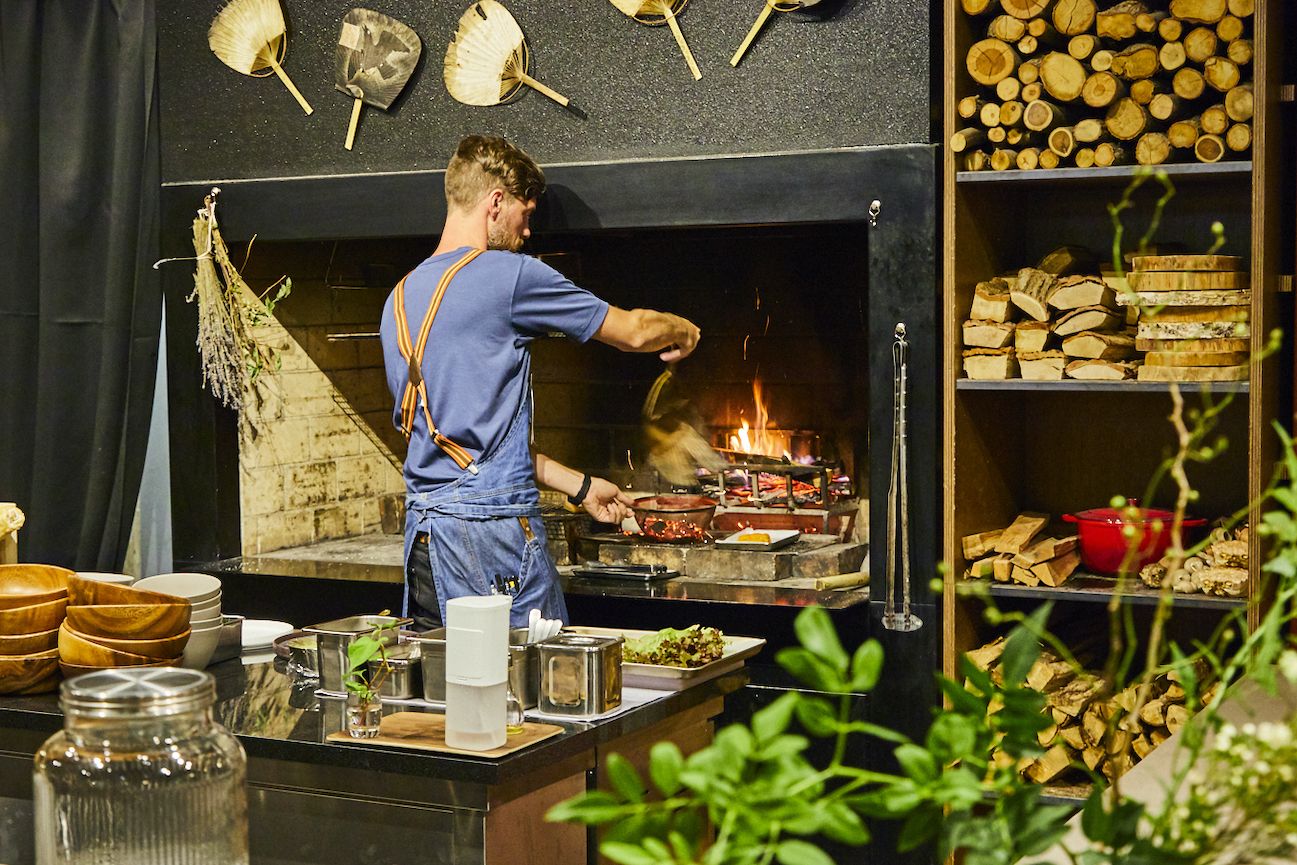
Carefully managing firewood supply while constantly observing the state of the fire. Vegetables, meat, seafood ... Most dishes are cooked in this open fireplace. The walls are decorated with countless burned fans.
The restaurant’s name 367 (365+2) is intended not only to express the Japanese climate, which changes every day—365 days a year—but to also offer a sense of history and culture (+2). It also signifies the 367 kilometers in total length of the Chikuma and Shinano rivers, which both flow through the local Shinshu region and are among Japan’s largest rivers. In addition to foods from the Shinshu region, so abundant in produce, the kitchen incorporates a number of ingredients from mountain, river, and sea that subtly change following the course of these long rivers, taking diners on a magnificent journey from the headwaters of Yatsugatake and the Northern Alps to the Sea of Japan as far as Sado Island. Such variation tells a tale of Japan's unique topography, presenting a microcosm of Japan's rich abundance of food.
The three themes that constitute the dinner course— namely “from the farm, from the sea, from the pasture”—are the result of Chris’s ongoing encounters with ingredients as well as his research into and discoveries of their potential.
The signature carrot mille-feuille appetizer showcases sliced carrots from Nagano, with purees of thyme, ginger, sage, garlic, etc. added in alternating layers, then cooked slowly at low temperature. In addition to the sweetness and dynamic flavor of these carrots unique to Japan, a very small amount of soy sauce added to the puree as a secret ingredient gives depth to the carrot’s flavor. Accompanied by fresh cheese made at a nearby ranch, this dish truly brings out the amazing flavor of its ingredients.
At the edge of the fireplace sits the main dish of charcoal-grilled free range Azumino pork, slowly smoking away with fragrant charcoal of mountain cherry.
“Japanese pork raised in a good environment is tender and has no undesirable odor. Above all, it has the absolute best taste—it’s so delicious that the fat just melts. Slow smoking concentrates the taste, imparting depth of flavor that takes it to the next level.”
The firewood used here is oak and mountain cherry, cut on a nearby mountainside and properly dried before use. Not only the wood’s aroma, but also the amount of heat fluctuates slightly depending on the wood’s size and moisture content—probably the greatest difficulty of cooking with firewood. Open flame grilling makes this a time-consuming dish to prepare, so it is served as a carefully calculated dining course.
"When cooking with firewood, it takes a lot of time both to prepare the firewood and to actually cook, so I'm always thinking about 30 to 40 minutes ahead. Freshly lit firewood and burnet-down charcoal embers differ completely in terms of heat output and aroma.”
Sit at the counter seat in front of the fireplace and watch Chris constantly managing firewood as each beautiful course arrives to amaze you. By the time you bring the last bite of dessert to your mouth, the firewood has burned to pure white ash, beautifully arranged at the fireplace’s edge. What is the origin point of such delicious flavor, created by a virtuoso performance of flame?
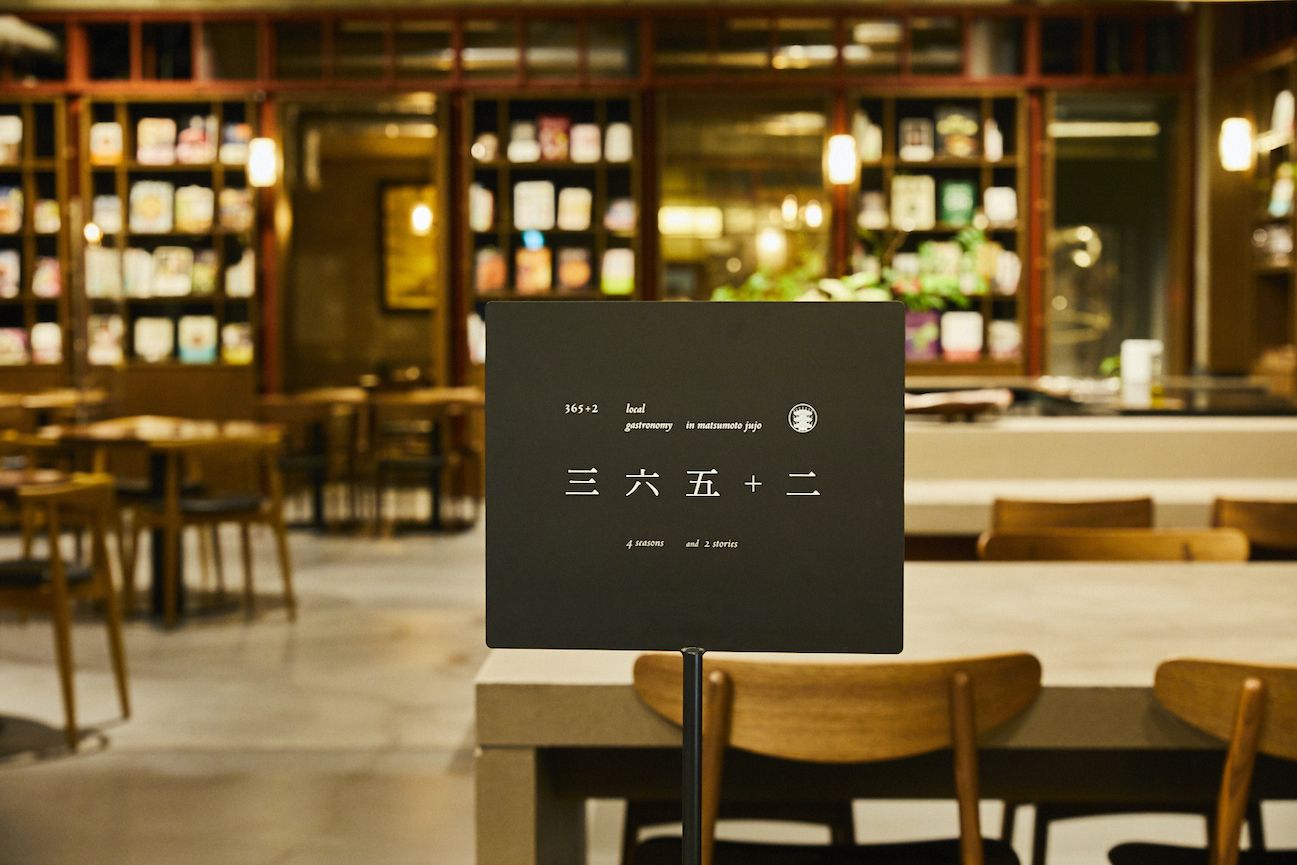
A unique restaurant name and a deep, convincing concept that all make sense when you try the food. The walls of the restaurant are lined with all kinds of books on food, all available for purchase.
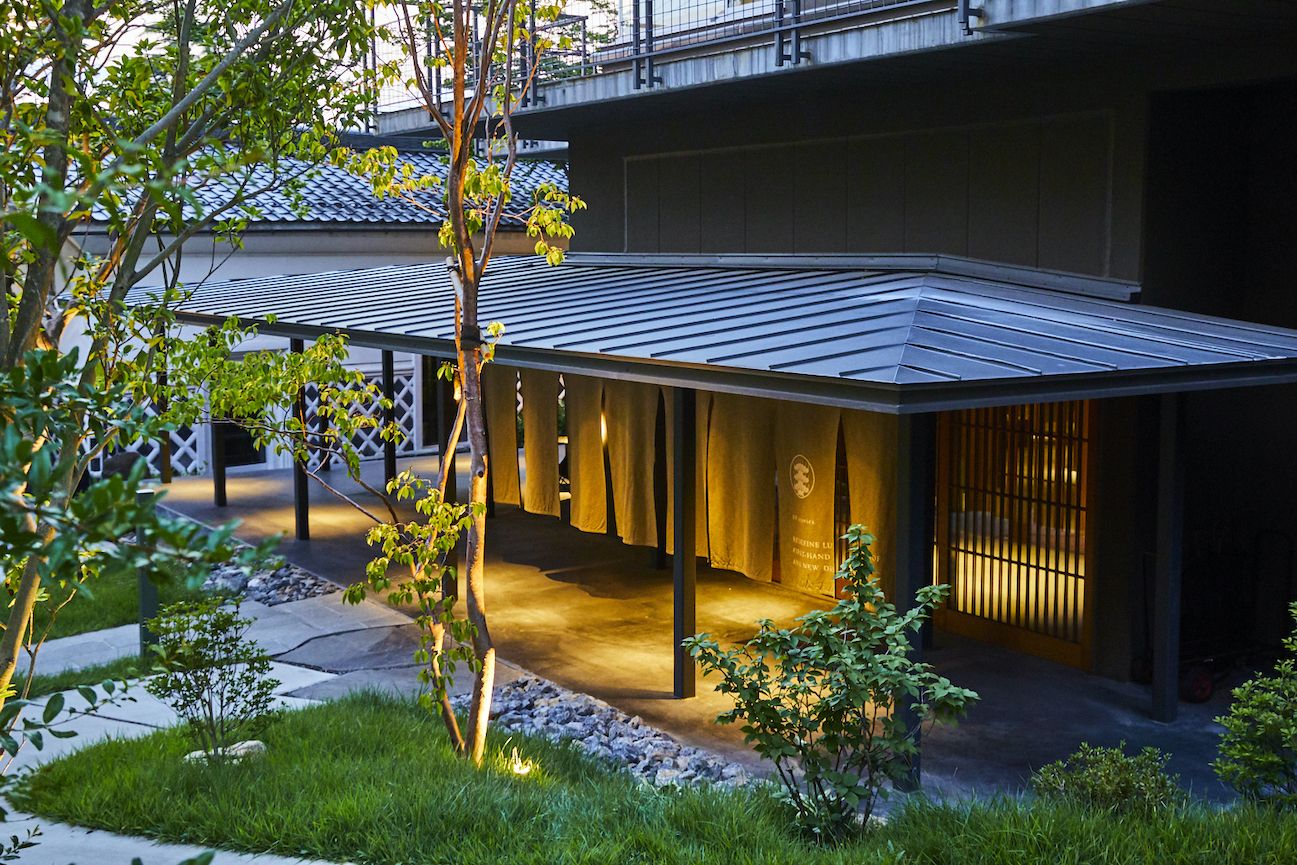
There is a main dining room in Matsumoto Honbako, one of the hotel’s two buildings. There is also a casual Italian restaurant in the Koyanagi building.
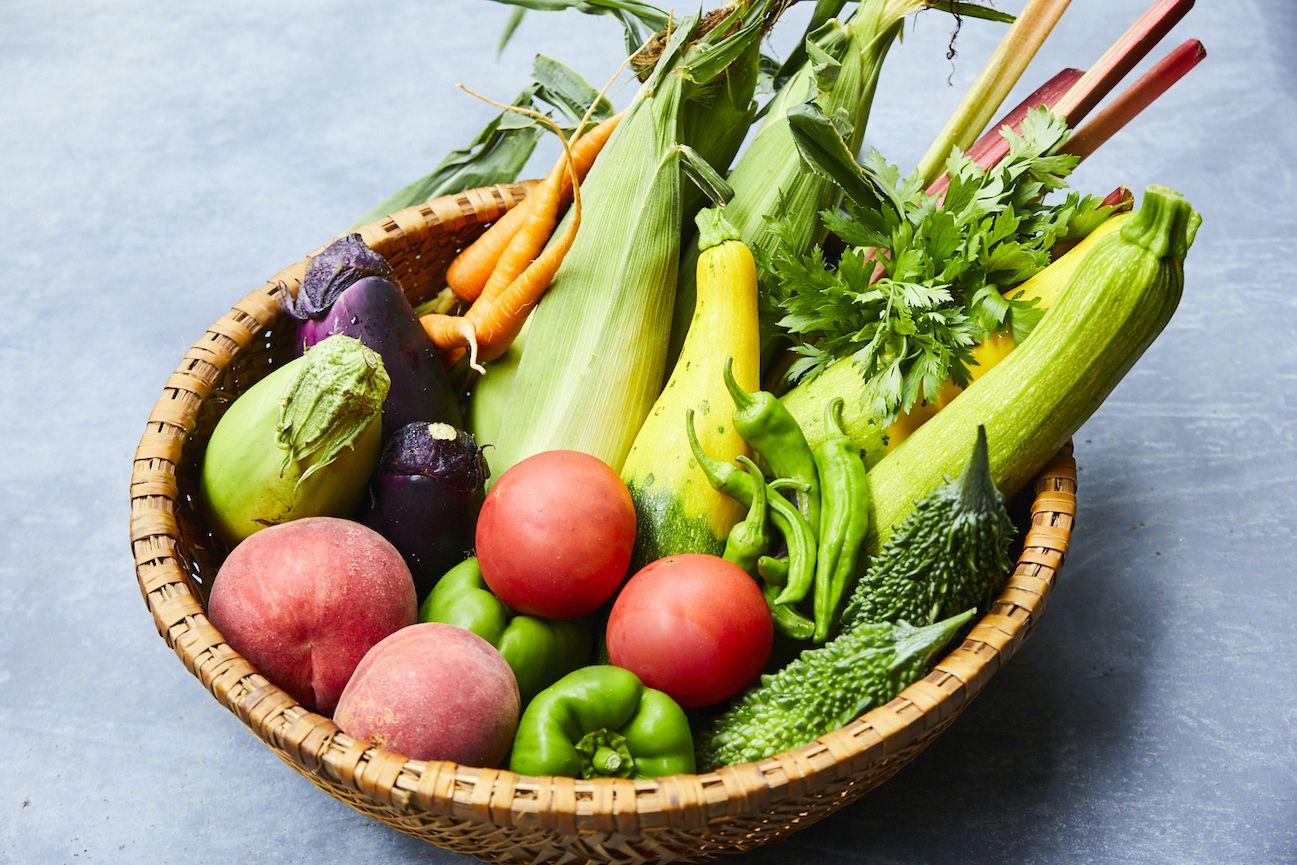
Most of the vegetables are sourced locally from Nagano. Produce varies depending on season and weather, but all dishes showcase ingredients with the sweetness and dynamic flavor unique to Japanese vegetables.
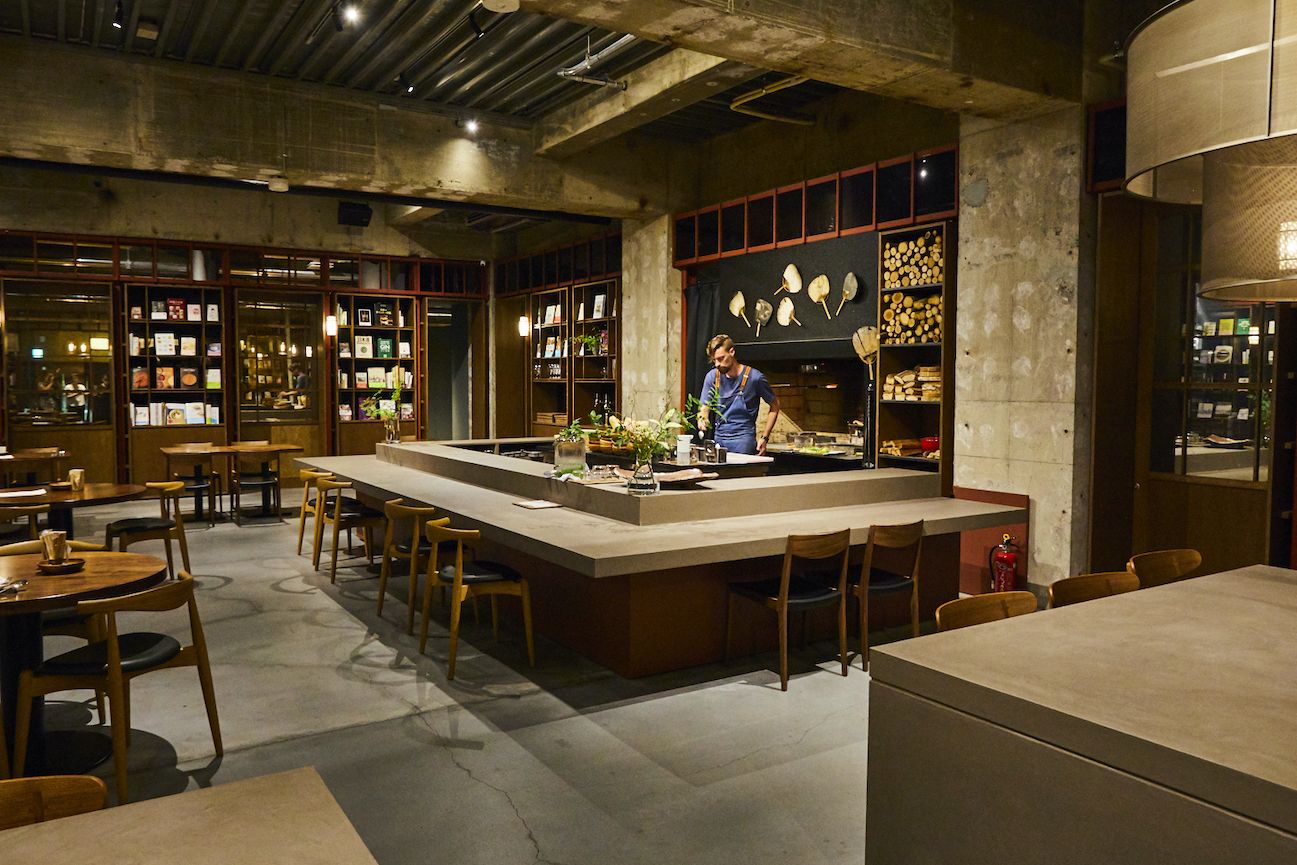
A large fireplace is built into the open kitchen in the center of the main dining room.
Originally from Washington, D.C., Chris came to Japan in 2014 to coincide with the opening of a luxury hotel in Tokyo, after working as a hotel chef in the United States. After working at the hotel for about three years, he made the decision to move to the restaurant Inua, the Tokyo sister restaurant to noma in Copenhagen, which has captured worldwide attention.
"Inua was just a world of surprises for me. My experiences all built upon brilliant memories together with the Inua team. The most surprising thing was that there were no gas stoves in the kitchen. There was only an induction heater for boiling water and a wood-burning fireplace. At the time I had 18 years of experience as a chef, but this turned all my experience on its head. More than anything, it was the feeling that the food itself was linked to nature. From ingredients to cooking methods, the chefs’ mindset and feelings were just fundamentally different.”
His experiences at Inua gave Chris an opportunity to encounter the future of food—namely, the concepts of primitive cooking and local gastronomy. Really interacting with others and getting closer to nature, and getting to work with great produce is what drives his curiosity about gastronomy.
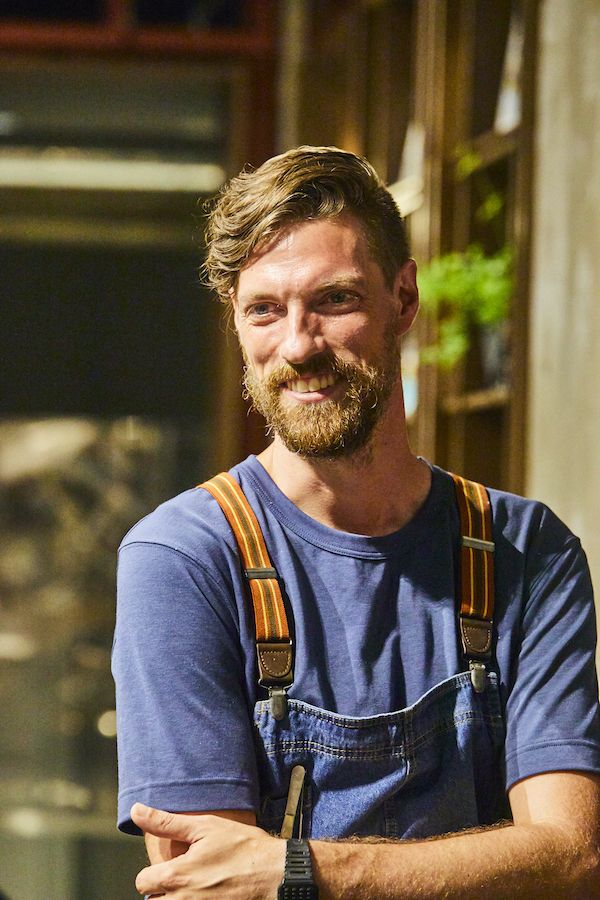
Chris speaks gently and calmly, but his enthusiasm and inquisitiveness for cooking and ingredients conveys strong passion.
“What astonished me when I started cooking in Japan was the umami punch of fermented seasonings such as miso, soy sauce, and vinegar. Despite being made entirely from grains, their flavor and strength are amazing. Of course, Japan’s ingredients are delicious when they’re fresh too, but fermentation creates a new stage of flavor, and the vegetables we’re thinking about are wonderfully linked to our main dishes, heightening the presence of the ingredients. At Inua, we aimed to combine the culture of preserved foods unique to Scandinavia with Japan’s own culture of fermentation. Sauces created by fermentation and the scent of charcoal are familiar to Japanese people, but the flavors created by Chris, who emphasizes multi-layered umami, offer a mellow yet innovative surprise.
“Rhubarb from Shinshu, which produces high yields, tastes best fermented with 4% salt at an ambient temperature of 20 degrees for one week. The optimum fermentation time for gooseberries was 4 days. We’re recording the fermentation process for each ingredient as data, and in the future we hope to install a warm, humid fermentation station in the kitchen.”
In the old-fashioned on-site storehouse with its plastered walls, production of cider has just been launched this summer after year-round studies of the humidity and temperature of each room. Made by squeezing the juice from apples that have been matured by exposing them to the outside air and then fermenting with yeast, cider is light and refreshing on the palate and pairs well with Japanese vegetable dishes.
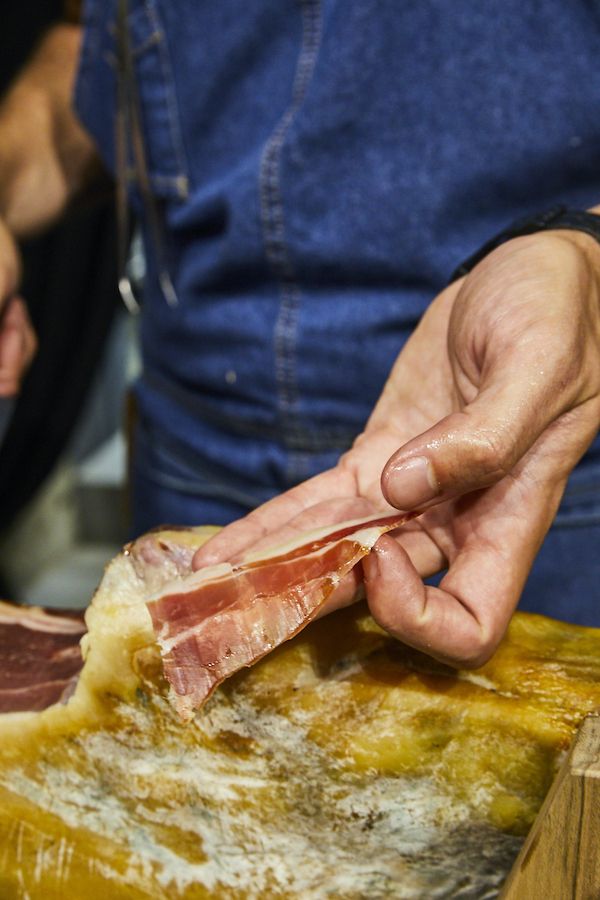
Aged prosciutto made from free range Azumino pork has a delicious depth of fatty sweetness.
"Japanese people are passionate about food, and they are very particular about it. For example, in the United States, people tend to pay attention to quantity—how much is piled on each plate—but in Japan, the emphasis is on how much quality is packed into each small portion. I really experienced this in the amount of salt I used when I first came to Japan as a chef. It’s completely different from how much I use now. In the past, I did my utmost to create stronger, more intense flavors, but now I try to rein it in and pare it back for more delicate flavor.”
Chris has lived in Japan for 17 years. He is surprised how greatly the ways in which he spends his free time have changed—previously, he’d usually book a table at a great restaurant on a day off, but now, on free days in Matsumoto, he has begun to visit fields and valleys where clear streams flow.
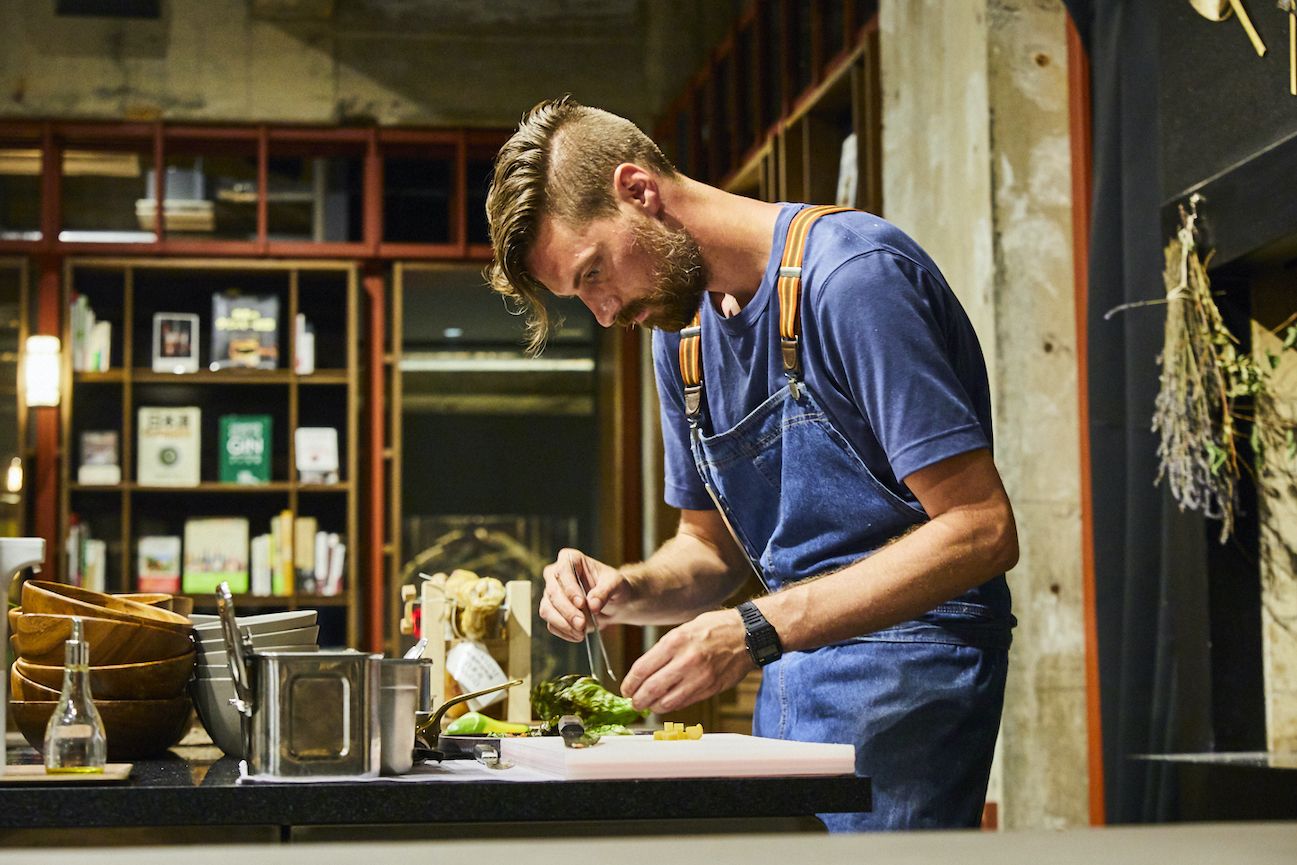
Chris's meticulous handiwork creates beautiful presentations, revealing scenes from nature and continuing to impress with each plate served.
"Before I came to Matsumoto Jujo, four chefs who worked together at Inua traveled together all over Japan for a month. Starting from Kyoto, we visited Oita, Fukuoka, Hiroshima, Kochi, Kagawa ... We wanted to visit Japanese producers to find out where the ingredients we were using came from. That trip was my starting point for understanding the excellence of Japanese ingredients, along with listening to the voices of producers. I really felt that the delicate sensibilities of the Japanese people came alive in the diverse vegetables produced with care in Japan to create such deep sweetness, as well as the delicious meat created through meticulously undertaken research. I want to take all these ingredients I’ve encountered, and reshape them into even better forms. Originally, people cooked in order to eat and survive, but I like to think that delicious flavor first emerged from the mistakes we made, over and over again. Because one person’s mistake is someone else’s delicious discovery.”
The difference between making mistakes and making new discoveries is razor-thin. That’s why he is unafraid of making mistakes, confronting new ingredients, and undertaking constant research. Chris is dedicated to searching for delicious flavors never tasted before, seeking out the richness and primitive cooking methods unique to Japanese ingredients.
Text: Miki Suka Photography: Taro Terasawa
Christopher Horton
Born in Washington, D.C. From an early age, he was fascinated by his enjoyment of cooking, and he started working in a kitchen at the age of 15. He graduated from the New England Culinary Institute in the USA, and gained experience at the Mandarin Oriental Hotel and several other well-known restaurants before moving to Japan in 2014. After working as deputy chef at the Tavern Grill & Lounge in Andaz Tokyo, he honed his skills as a chef at Inua, the Tokyo sister restaurant of noma, which has earned the number one spot four times in the World's Best Restaurant awards. In November 2020, he was appointed the grand chef (head chef) at Matsumoto Jujo in Matsumoto City, Nagano Prefecture.

